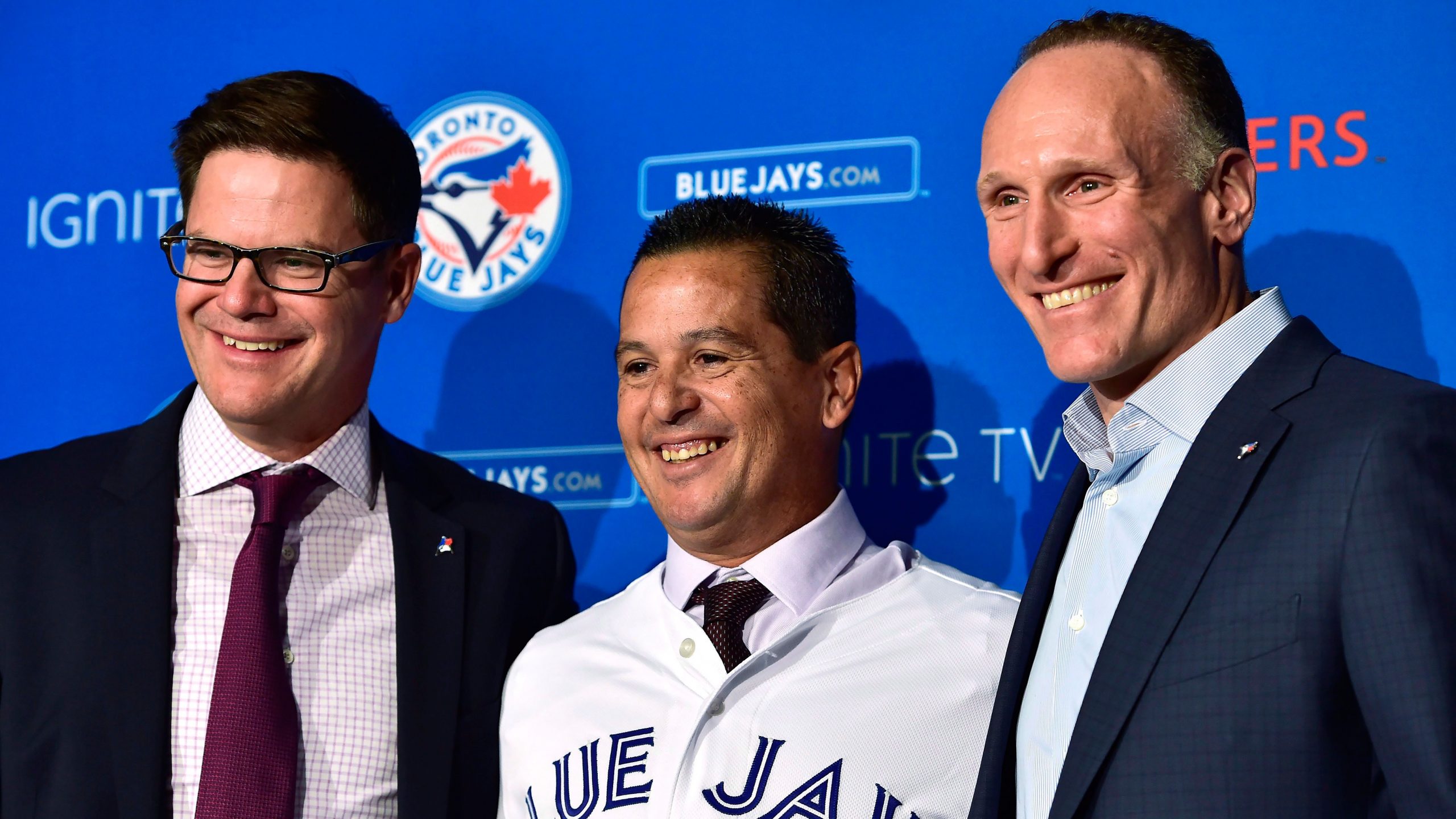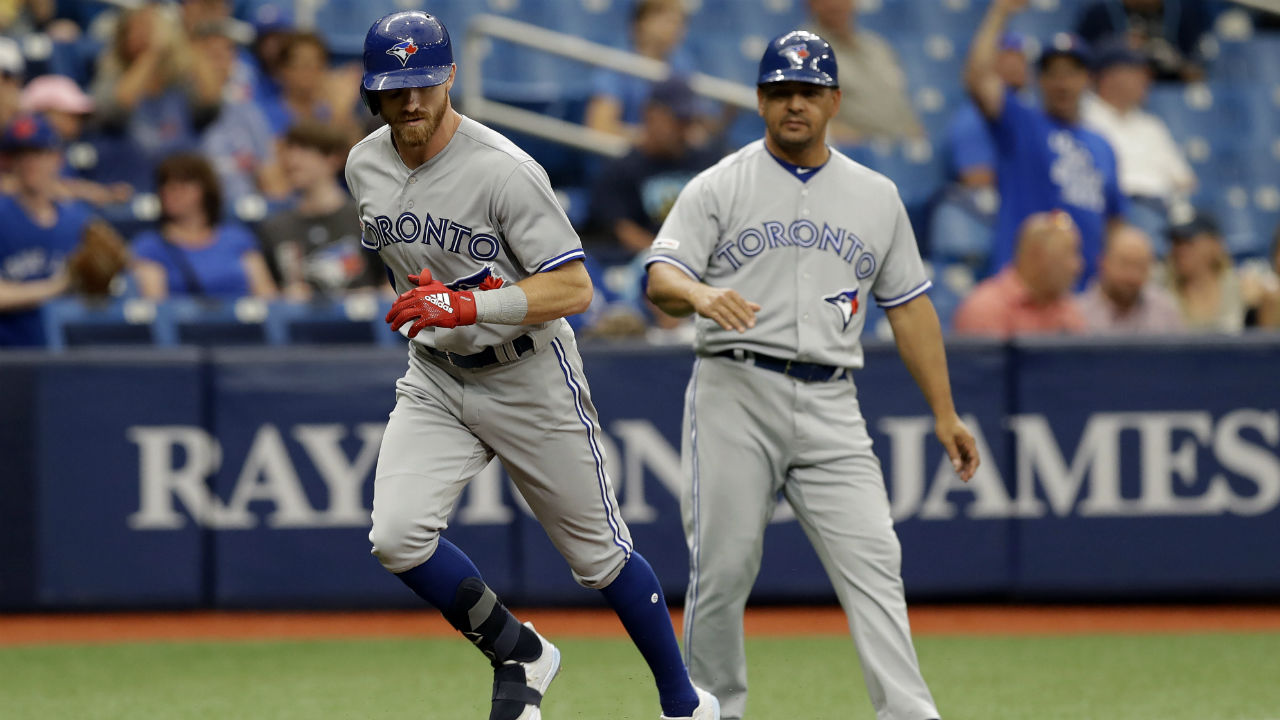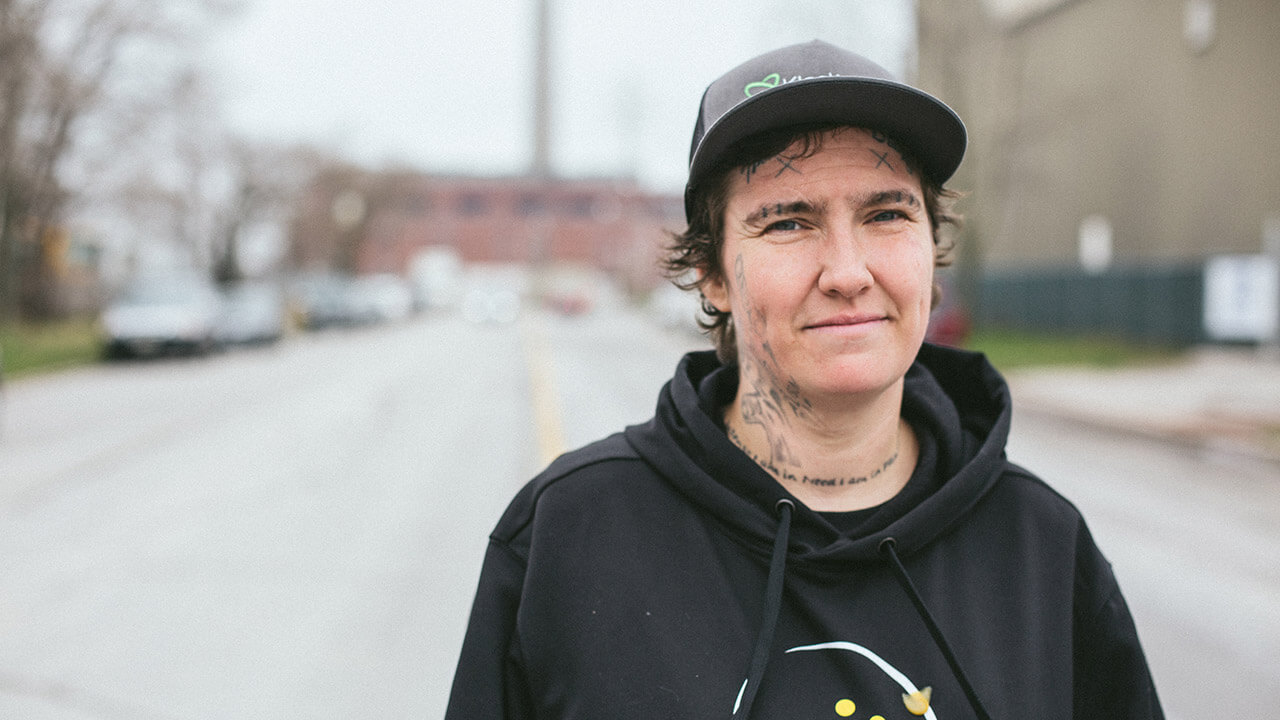The roof is open at Rogers Centre on this sunny afternoon in late July, and the baseballs whipping through the air have to cut through a breeze. Four Blue Jays outfielders are gathered in centre, taking turns tracking down flies. Mark Budzinski, the team’s first base and outfield coach, is positioned at the left-field line, feeding a pitching machine that shoots balls toward Randal Grichuk, Teoscar Hernandez, Billy McKinney and Lourdes Gurriel Jr.
The players go straight back to make their catches, then they work on diagonal cuts. The latter portion of the drill gives Gurriel, who stands six-foot-three, an opportunity to show off his immense physical gifts. As he gallops at full speed, he extends a long glove arm that pulls in the ball like a vacuum.
Gurriel more than looks like he belongs in the outfield. Which is quite impressive considering he began taking pre-game fly balls there only three months ago. Before that, he hadn’t done so in three years, since his days as an amateur in Cuba.
Gurriel’s move to left field from second base earlier this season seems to have wholly unlocked his true potential, both on the defensive side and with the bat. The 25-year-old was, in some ways, broken when he was demoted to triple-A on April 15. However, 40 days later, he returned to the Blue Jays an entirely different player, and he continued to deliver right up until he was sidelined with a quad strain in early August. The assignment — instructive, intensive and massively impactful — turned Gurriel’s season around and potentially saved his career. “Now, he’s found a home [in left],” says Bisons positional coach Devon White, who worked closely with Gurriel in Buffalo. “That’s where, in my opinion, they should leave him. And he’ll continue to grow.”
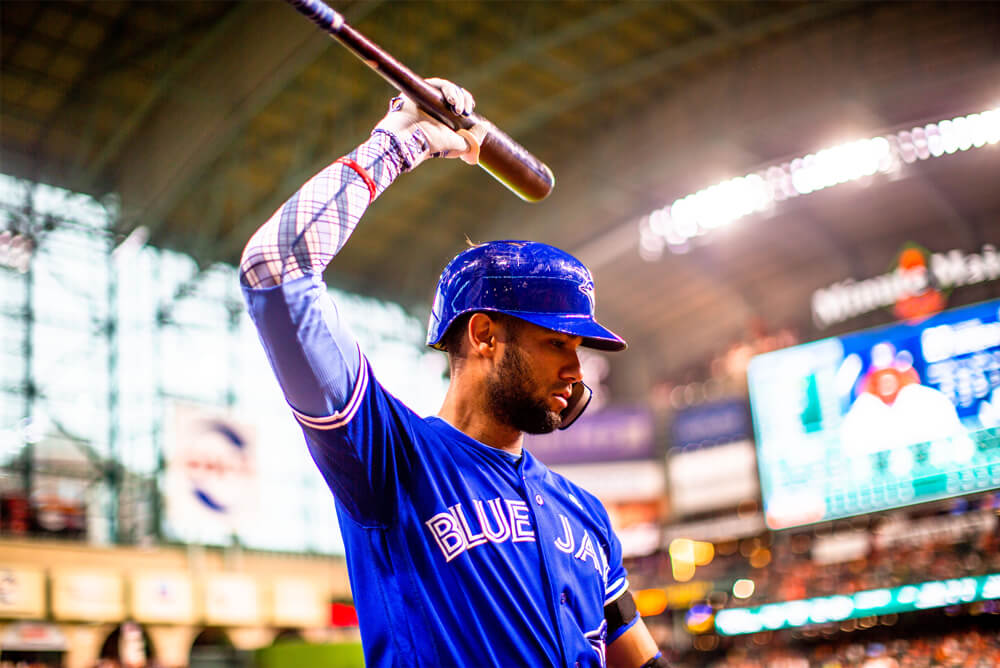
Gurriel showed flashes of brilliance in the middle infield during his 65-game stint with the Blue Jays last year. He began 2019 as the team’s everyday second baseman, but anticipation quickly gave way to concern when he opened the campaign with just seven hits in his first 40 at-bats — good for a .175 average through 13 games. Amazingly, his defence was even more troubling than his performance at the plate.
In the seventh inning of an April 13 contest against the Tampa Bay Rays at Rogers Centre, Gurriel fielded a routine ground ball near second base and delivered a throw to first so far wide that Rowdy Tellez couldn’t get close to the ball despite a fully extended dive. The next afternoon, Gurriel scooped a routine grounder even closer to first — about 35 feet away — and bounced a throw that pulled Justin Smoak off the bag, allowing the Tampa hitter to reach safely. He was removed from the game and optioned to Buffalo the next day.
The errors were somewhat reminiscent of ones from fellow second basemen Steve Sax and Chuck Knoblauch, the latter of whom had his career derailed in part due to what’s known as the yips. Publicly, the Blue Jays weren’t saying Gurriel was similarly afflicted. Manager Charlie Montoyo said at the time Gurriel was facing a mental hurdle. General manager Ross Atkins acknowledges that the club’s decision to send Gurriel down so quickly was in part to nip any potential issue in the bud before it morphed into something worse, but won’t go so far as to put a label on it.
“There is certainly a psychological component in throwing for all middle infielders that ever struggle with it,” Atkins says. “It seems to really surface at second base because of the shorter throw. So, I feel as though [for Gurriel] there was some psychological [component] or lack of confidence there that was occurring at second base on the shorter throw.”
Gurriel, for his part, says he wasn’t overly concerned about his throwing when he was sent down to triple-A. “Actually, I never worried about it,” he offers through translator Hector Lebron. “These things happen in the game. I wasn’t thinking about it.”
Bisons manager Bobby Meacham, a former shortstop with the Yankees, is very familiar with the throwing issue from both his playing days and coaching career. The most memorable case he witnessed belonged to Chad Hermansen, a shortstop drafted 10th overall by the Pirates in 1995. Meacham was Pittsburgh’s roving infield instructor and recalls a young Hermansen in big-league camp at spring training admitting to teammates and coaches that he couldn’t feel where the ball was going when he released it. Eventually, he had to be moved to the outfield.
“It ate him alive mentally,” Meacham says. “He could not throw the ball. He couldn’t even play catch [pre-game] next to guys in the outfield. He had to go way down the foul line — he felt like he might hit somebody, which is just a mental thing.
“Gurriel was nowhere near that.”
Meacham believed Gurriel was simply struggling with mechanics and feel, and viewed him as a player who successfully manned shortstop for the Jays down the stretch last season and looked his best when airing out throws. “I saw a guy who had a real feel for throwing the ball in a certain way,” says Meacham. “But when he got closer to something — even his feeds [to second] last year and the year before when we first saw him at spring training — he didn’t have a feel for what his arm slot should be. He just didn’t have a feel for that short throw.”
When Gurriel initially arrived in Buffalo in mid-April, Meacham and his staff were careful to not inundate him with instruction. Instead, they took a slow, almost hands-off approach that, in hindsight, proved incredibly deft.
Gurriel was greeted by a simple message from Meacham when he showed up at McCoy Stadium in Pawtucket, R.I., where the Bisons were visiting the Red Sox triple-A affiliate. Something to the effect of: Hey, don’t worry about defence right now. We just want to get your swing going. The manager had been advised during his conversations with Toronto’s front office to let Gurriel operate entirely at his own pace. If he chose to take grounders and practise throws from second pre-game, that’s great. If he wanted to avoid defence entirely for a while, cool.
In Gurriel’s case, avoiding his problems was never in the cards. “He goes, ‘I just want to get better so I can go back up there and play,’” Meacham recalls. “He said, ‘I want to play. I love playing baseball. I want to get better at it. I want to play here and then I want to play up there.’”
On At the Letters, Ben Nicholson-Smith and Arden Zwelling take fans inside the Blue Jays and around MLB with news, analysis and interviews
So, on Day 1, Gurriel trotted right out to second base to focus on his defence alongside 23-year-old shortstop Richard Urena, who offered patience and encouragement. They worked together on throwing for the next several days. “Gurriel has always been like a brother to me. So when he got here, I helped him with whatever I could. We got along really well, so he trusted me,” says Urena in an interview interpreted by Tanya Bialostozky, a Blue Jays mental performance coach.
Asked what he thinks was plaguing Gurriel’s throws, Urena responds: “I couldn’t really say. Maybe, I guess I could think that he lost a little confidence in himself, which is something that happens to all of us. Maybe it’s because his hitting wasn’t going so well, so that’s where his mind was at. And he was just trying to find that trust and confidence in himself. That’s something we’ve all gone through.”
Following three games as the Bisons’ designated hitter, Gurriel was back in the lineup at second base, where he started nine of his next 14 games. He looked “great” in the field, according to Meacham, turning a few double plays and executing throws on the run. But along the way, there was a particular moment when Gurriel fielded a ball near second and set his feet before releasing a tentative throw. It seemed to the manager that he was making sure he didn’t throw the ball away, as opposed to confidently firing it off. It ended up being on target, but demonstrated that he was not entirely comfortable with short tosses.
Fortunately for Gurriel, there were no short throws where he was heading.
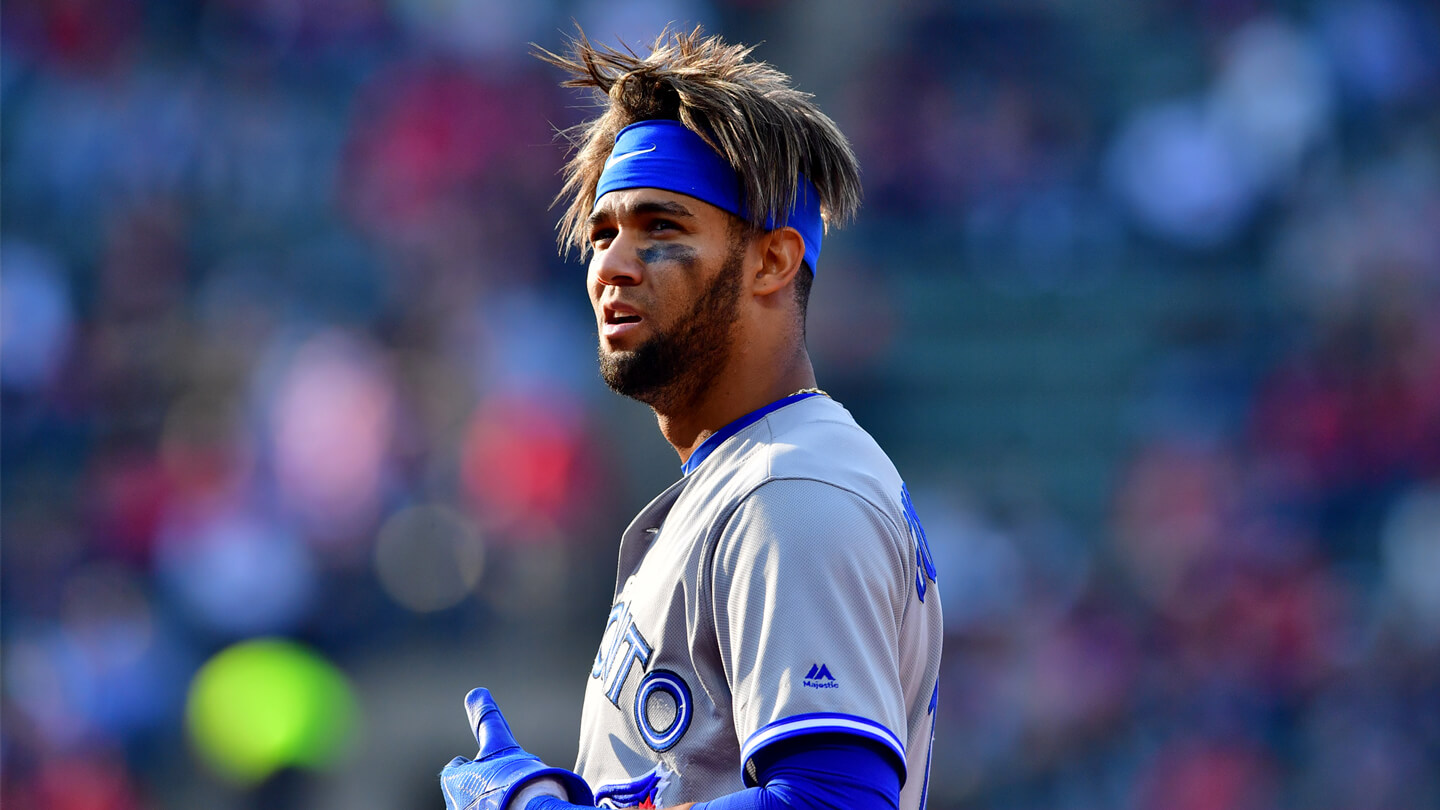
On May 5, Meacham told Gurriel the Bisons were going to try something different that day and start him in left field. The outfield wasn’t exactly new to Gurriel; he played 40 games in left during the 2015–16 season in Cuba. But that was a long time ago and he hadn’t regularly practised shagging fly balls since. The Bisons didn’t take batting or fielding practice before their 1:05 p.m. Sunday game, but about 50 minutes prior to the first pitch, Gurriel asked Meacham if the manager could hit him some flies.
After checking with the groundskeeper, Meacham lugged a bat and a bucket of balls to the dish at Buffalo’s Sahlen Field. It was the first time any member of the Bisons staff had hit fly balls to Gurriel and Meacham delivered about 30. When Gurriel still wasn’t quite satisfied, the manager launched a few more. They packed in the impromptu practice close to half an hour from game time.
The decision to move Gurriel to the outfield came from above. The Blue Jays were intent on maximizing his versatility — the more positions the better they’d be able to find him playing time. “It’s not just Lourdes Gurriel. It’s the people here [in Toronto] and how that would impact him coming back; the people in triple-A who he was taking playing time away from — that would have been Cavan Biggio at second — and his desire to continue to play second,” says Atkins. “And then, as we talked to him more about integrating outfield play and potentially shortstop as well, it really just became a … process of developing that plan.”
Around that time, Socrates Brito, Brandon Drury and Alen Hanson were getting starting reps in Toronto’s outfield as the team tried to figure out its larger defensive picture. Gurriel was also cognizant of how versatility could help him. “I wanted to get better real fast,” he says. “As soon as possible, because I knew the team would be needing me to be in the outfield.”
He continued taking pre-game ground balls in the middle infield and also began to work intensively with White, a seven-time Gold Glove centre-fielder in his playing days. The learning curve wasn’t too steep. Gurriel could catch the ball — he was just a little nervous at first. He needed to refine his routes, and work on tracking high flies and fielding balls hit off the fence.
Outfielders are taught to field balls that drop in front of them with one foot forward, making the ensuing throwing motion easier and smoother. But Gurriel initially scooped balls like an infielder, with his feet squared under his shoulders. “We told him, ‘You can’t do that,’” says Roemon Fields, who played centre field during Gurriel’s first game in left and noticed the lingering infield habits. “Then his athleticism took over and he was throwing guys out.”
Gurriel played a total of seven games in left field for Buffalo, while also working in more game reps at second, short and DH. Overall, he slashed .276/.308/.480 with 17 extra-base hits across 31 games with the Bisons, but that was far from the most important aspect of his triple-A stint. White says he acclimated to the outfield quickly, which didn’t surprise the coach. He’d told Gurriel that his length would translate well, especially as he grows older and stronger. “When he came down here, me and Bobby spoke to him a lot about him being a good player and not losing his confidence,” White says. “And we were pretty loose. There was no pressure on him here. I think that helped in his game a lot — it carried right over to the big leagues.”
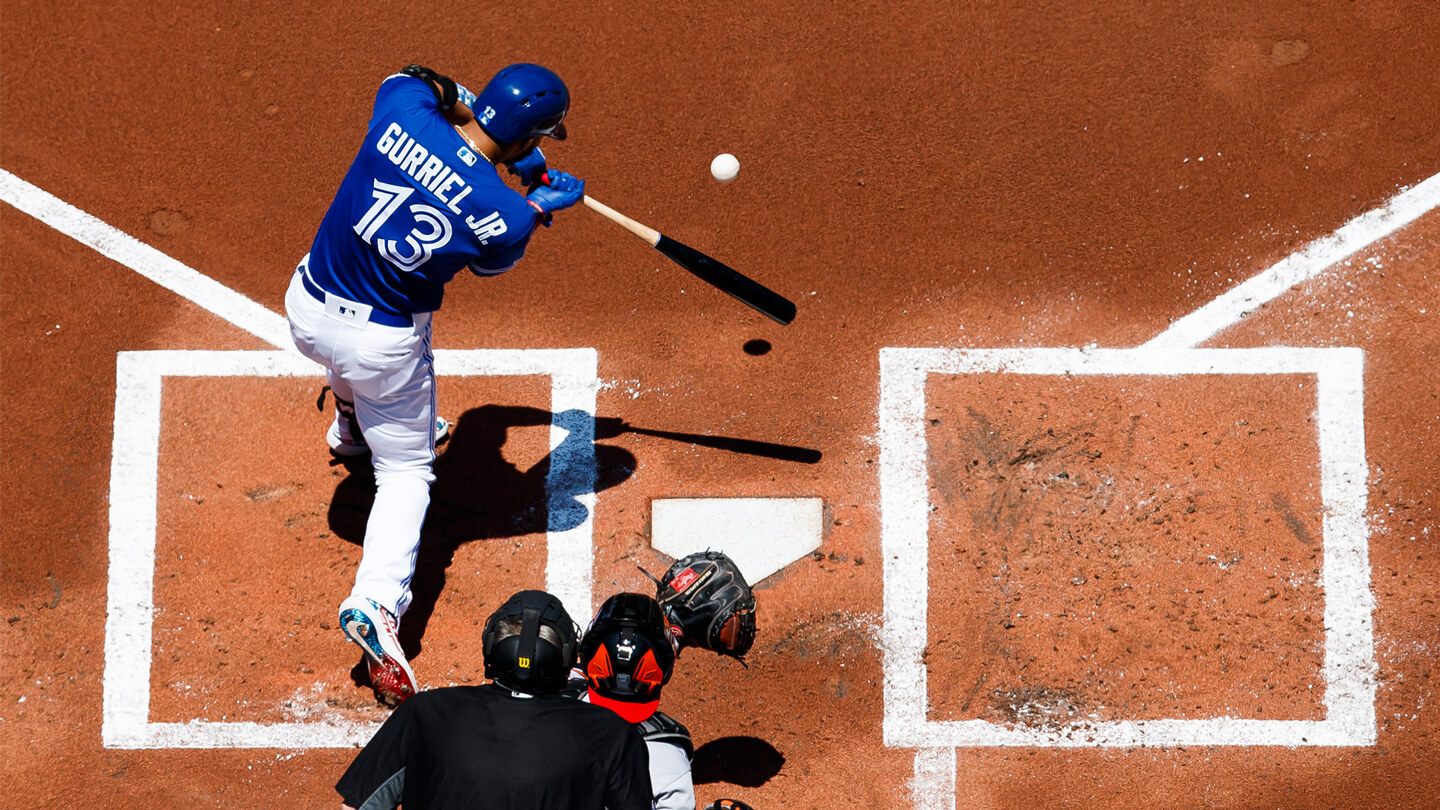
Gurriel made an immediate impact upon his return to the Blue Jays on May 24. He homered in each of his first three games and impressed with his defence in left. He’s since taken complete ownership of the position, and turned what was a liability into one of his greatest assets: Gurriel’s sprint speed ranks in the 66th percentile of MLB, trailing fellow Blue Jays outfielders Grichuk, Hernandez and Derek Fisher, but his throwing arm has now placed him in elite territory. His nine outfield assists are tied for fourth in baseball, despite Gurriel playing fewer innings there than any other player in the top six and all but two players in the top 15.
He also continued to build on that late-May offensive momentum — to the point that Gurriel convincingly profiled as one of the Jays’ best hitters from his return until he was placed on the 10-day DL. In fact, the .935 OPS he has posted since May 24 leads the team and ranks in the top 25 across baseball.
People around the Blue Jays say Gurriel is among the biggest sponges on the team when it comes to his approach at the plate. He’s open to considering any information and resources he comes across, and seems to put it all to good use. Blue Jays hitting coach Guillermo Martinez sees an entirely different batter now than the one who struggled at the beginning of the season, and believes the steady defence has had a settling effect overall. “For Gurriel, it’s more of a mindset,” the coach says. “Just making him focus more on the hitting aspect and putting him in the outfield has helped him focus and calm himself down.”
White agrees: “You have to work at both, but he’s always been a good hitter … Right now, everything is coming together for him and mentally he feels like, ‘I belong.’ That’s the main thing … just feeling that they belong there and they’re not going to give that spot up.”
Despite Gurriel’s success in left, Atkins says the club is not ruling out a future return to the infield, and doesn’t want to eliminate the “versatility aspect” of his game. When asked if he views himself as an outfielder now instead of an infielder, Gurriel says that he knows he can still play the infield, but the Blue Jays need him elsewhere, so that’s where he’ll focus his efforts.
Where there is no ambiguity, though, is the fact that Gurriel, in fully realizing his potential, is proving to be the best signing Atkins has made as a GM. “We saw that [promise] in him as an amateur,” Atkins says. “It’s interesting because the bat has always been the carrying tool. He was a versatile player as an amateur, and the player we are seeing today is the player that was described to us by our scouting department.”
Before Atkins and Co. signed Gurriel to a seven-year, $22-million deal in late 2016, they spent plenty of time digging into his character and learning about his work ethic. Because of that, his transformation in Buffalo was a validation rather than a surprise to Blue Jays brass. “He just embraced it as an opportunity,” says Atkins. “There was no pout. There was no, ‘I’m not in the major leagues.’
“Some of the best players in the game, they’re not driven by the fame, the potential dollars, the stage, as much as they are driven by competition and being great … They’re just embracing a challenge and embracing what’s in front of them. He did that immediately.”
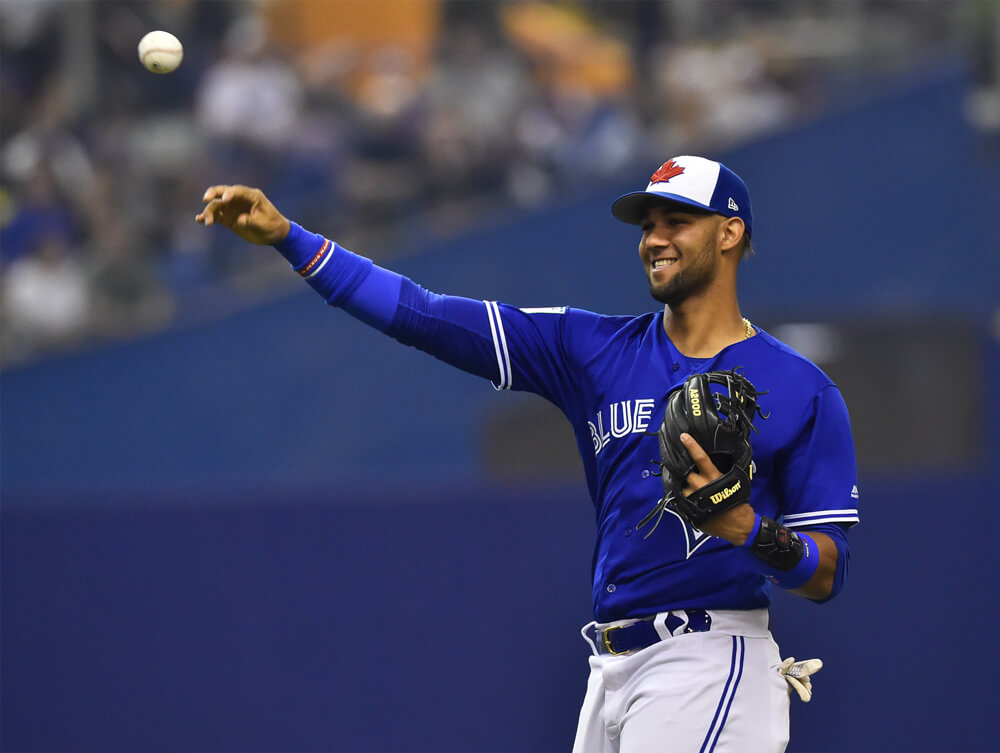
Devon White has developed a tradition during his past few years as a coach. He’ll get a brand-new glove and diligently work it in, tending to it like a gardener cares for their favourite rose bush. Then, when he feels the time is right, White will gift it to a player.
When Gurriel first moved to the outfield in Buffalo, he was using a hard mitt that was fresh out of the box and not yet broken in. White saw that and quickly decided Gurriel should be the recipient of a black-and-gold Rawlings he’d been working on for the past couple of years. Turns out White and Gurriel are the same hand size, so the glove is a perfect fit. Gurriel has used it exclusively during games since returning to the majors. “He’s a kid that wanted to learn how to play the outfield,” White says of the reason he chose Gurriel. “And on top of it, I love the kid. He works hard.”
To show his appreciation, Gurriel presented his now former coach with a box of Cohiba cigars and a new Rawlings glove that White will break in with the intention of one day gifting to another player, continuing the cycle.
However, if Gurriel should ever come calling White for a replacement mitt, there’s one thing he should know. “He’s gotta pay me a lot of money to break [the next] one in for him,” says White with a smile.
Would more Cohibas work, too? “Yes, that’ll do.”
Designed and edited by Evan Rosser

